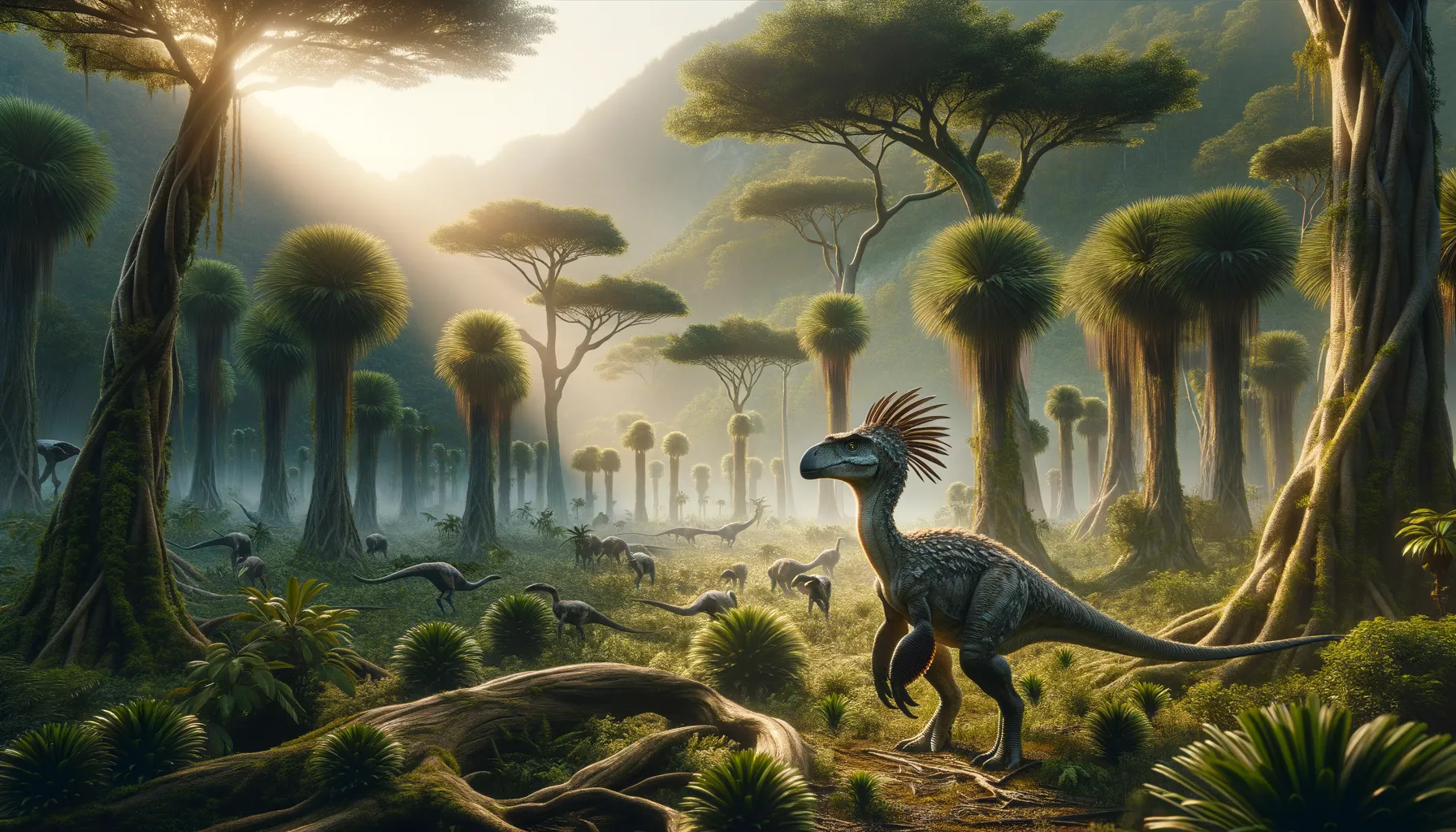
Kuszholia
A small dinosaur with a big evolutionary story.
Period
Cretaceous
Length
Length estimated to be around 1 meter.
Height
Likely stood around 0.5 meters tall.
Weight
Estimated to be light, less than 10 kg.
Kuszholia is a lesser-known dinosaur from the Late Cretaceous period, primarily discovered in Kazakhstan. It was a small, bird-like creature, part of the diverse dinosaur ecosystem of its time. Although not much is known about it, Kuszholia helps paleontologists understand the varied life forms of the Cretaceous period and plays a role in piecing together the evolutionary links between dinosaurs and modern birds.
Diet
Kuszholia likely had an omnivorous diet, feeding on small animals, insects, and possibly plants. The structure of its teeth and jaw suggests it could handle a variety of food sources.
Hunting
As a smaller dinosaur, Kuszholia might have hunted insects and smaller creatures, relying on stealth and speed. Its hunting behavior was probably opportunistic, taking advantage of accessible food sources.
Environmental challenges
Living during the Late Cretaceous period, Kuszholia faced environmental challenges like changing climates and competition for resources. It inhabited an ecosystem with larger predators and needed to avoid becoming prey. Seasonal variations and potential volcanic activity could have also impacted its survival strategies.
Speed
Kuszholia had moderate speed, useful for short bursts.
Lifespan
Its lifespan is not precisely known.
First discovery
First discovered in the mid-20th century in Kazakhstan.
Fun Facts
- Kuszholia was a small dinosaur that lived during the Late Cretaceous period, around 90 million years ago.
- This dinosaur's remains have mostly been found in what is now Kazakhstan.
- Kuszholia is known primarily from its teeth and a few other fossilized bones, so scientists still have many questions about its full appearance.
- It's thought that Kuszholia may have been a fast runner, using its speed to escape from predators or catch prey.
- Despite its small size, Kuszholia lived in a world dominated by much larger dinosaurs, which made agility and quickness essential for its survival.
- The name 'Kuszholia' was given in honor of the Kuszhol Plateau, the area where its fossils were discovered.
- Kuszholia is part of a group of dinosaurs that are not fully understood yet, making it an intriguing subject for paleontologists like me.
Growth and Development
Kuszholia likely hatched from eggs and underwent rapid growth to quickly attain its adult size, minimizing vulnerability to predators. Its development was probably similar to that of other small theropods, with a focus on acquiring foraging and evasive skills early in life.
Habitat
Kuszholia's habitat was likely a mix of forested and open areas, providing both cover and access to diverse food sources. The environment supported a wide range of plant and animal life, enabling Kuszholia to exploit different ecological niches. Its habitat played a crucial role in its survival and evolutionary adaptations.
Interaction with other species
Kuszholia might have coexisted with larger herbivores and predators, using its agility to steer clear of threats. It possibly engaged in direct or indirect competition with other small theropods for food and resources. Its interactions with other species were vital in shaping its ecological niche.
Natural lifespan
Kuszholia's natural lifespan remains unknown but likely was a decade or two.
Reproduction
Kuszholia reproduced by laying eggs, similar to other theropod dinosaurs. It may have had nesting behaviors to protect its eggs from environmental hazards and predators. The care of offspring might have included strategies to ensure high survival rates in juveniles.
Social behaviour
Kuszholia's social behavior is not well known, though it may have lived in small groups or pairs for foraging and protection. Social interactions likely influenced its feeding strategies and defensive tactics. Communication within these groups might have involved visual or vocal signals.
Fossil locations
Fossils of Kuszholia have primarily been found in Kazakhstan, providing insights into its geographical range. These fossils are critical in understanding its distribution and ecological preferences. Research continues to potentially uncover more locations that might reveal additional details about this dinosaur.
